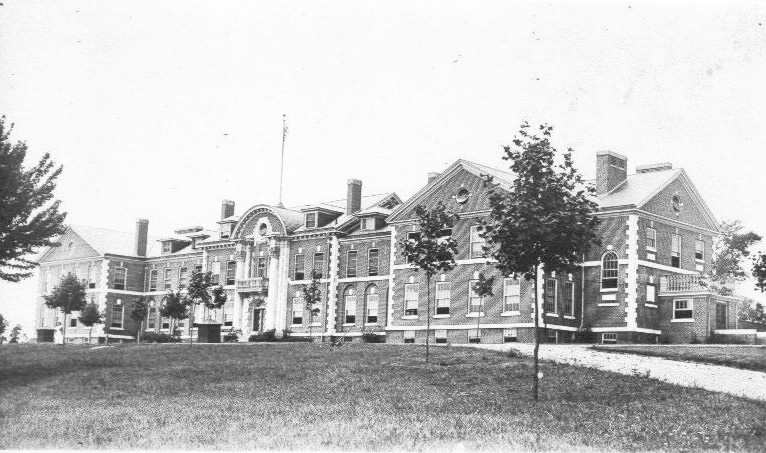
By Dan Shine
Voice Columnist
The University of New Haven
Part II
See Part 1
The New Haven County Temporary Home
For Dependent and Neglected Children
Continuing the series on the University of New Haven, the story of the Allingtown main campus cannot be told without referencing Connecticut’s county home, child welfare system. The state passed legislation in 1883 to create a network of facilities in each of the state’s eight counties. This was done out of the perception that the problem of neglected and uncared-for minors needed to be addressed in a more organized and uniform way.
Thus the New Haven County Temporary Home for Dependent and Neglected Children was created as part of the system. Prior to this, such children were kept in town almshouses or placed in institutions. These new homes were intended to provide education, discipline, nutrition and sanitary conditions for children who had been brought to the attention of the courts and committed to such care. By 1960, the restructuring of the application of government services brought about the end of county government within Connecticut. With this came the end of “county homes” and transfer to services in a less institutional setting.
What we know today as University of New Haven’s Maxcy Hall opened late in 1909 as the third and final location of the home in New Haven County. The stated cost of construction was $150,000. The institution had begun its operation in the Tyler City section of Orange in 1884. Subsequently, the operation was moved to a larger facility in New Haven, and yet again needing more space, the Allingtown site was chosen.
The new home, plus a smaller structure in matching Colonial Revival style that is today known as the Gate House, was built to accommodate as many as 300 children with classrooms, dormitories, recreational facilities, a chapel, an infirmary, and staff quarters. With its location on a 25-acre Allingtown Hill site, the magnificent vista was an added bonus, one that is still enjoyed today. An elderly man who visited shortly after the opening declared that these ‘poor’ children were “richer than thousands in the city” and that living here “ought to help in making them fine men and women.” The home, said to have been intended as the “finest in the country,” was lauded for its “palatial appointments” and was perhaps the only one in the eight Connecticut counties specially built for its intended purpose.
However, the administration of the facility was not without significant flaws: The unfettered use of corporal punishment led to concussions and broken bones among the children who were under County care. This ultimately led to the dismissal of the facility’s superintendent in 1955. Shortly thereafter, the facility was closed, when the institutional approach to child care fell out of favor, and all the county homes were eliminated.
Apparently, the building has its own ghost: The story is still told of young George Malloney, a displaced war orphan who died tragically in the auditorium of the Main Building (Maxcy Hall) in the 1930s. It is still rumored that glimpses of a small boy wandering aimlessly around the building have been witnessed by students and faculty alike.
The vacant property here was purchased in 1960 by President Marvin K. Peterson for New Haven College, and the institution grew to become the University of New Haven in 1970. The structure was known simply as the Main Building until June 4, 1987 when it was named for Dr. Ellis C. Maxcy who headed the college from 1932 to 1937 during the Great Depression.
Maxcy Hall continues to be UNH’s ‘main building’ today with classrooms, university offices, and other support facilities.
This story was co-authored by retired University of New Haven reference librarian, Bob Belletzkie, whose campus history articles were published in UNH’s Charger Bulletin in 2005 and 2006.